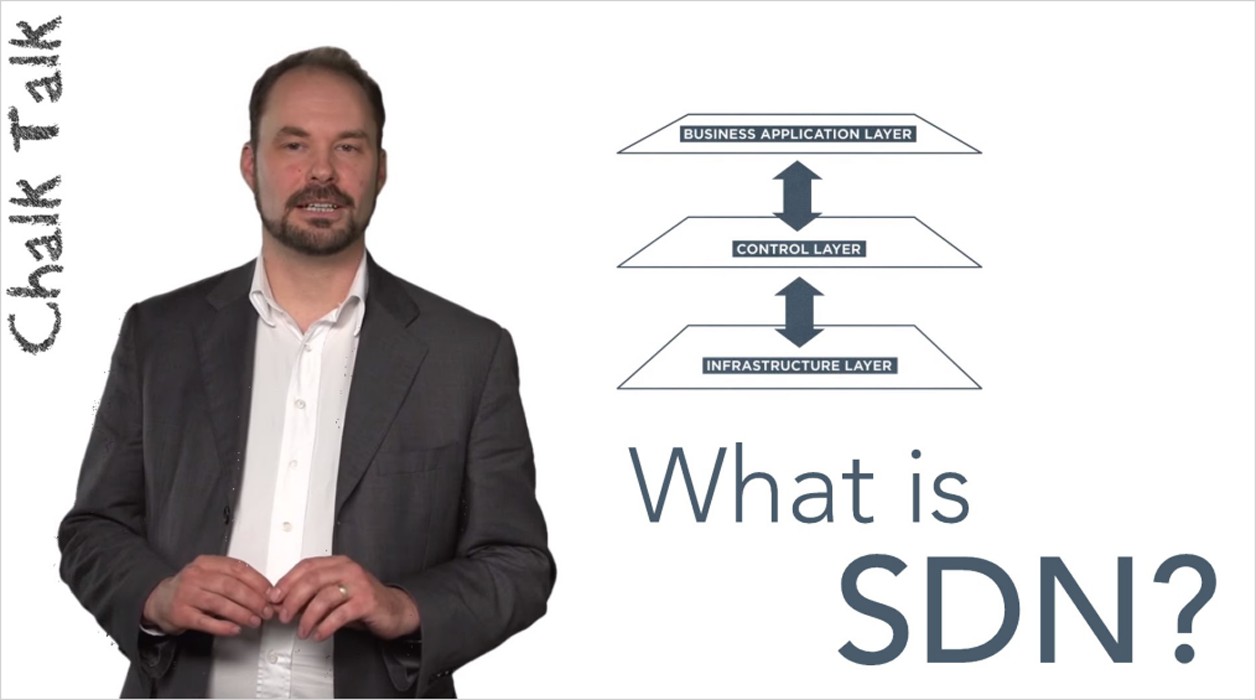Why SDN?
Why are operators and enterprises turning to SDN?
You are facing unprecedented business pressures to cut costs to make up for flat revenues. But the hockey-stick growth in multimedia, cloud applications, and mobile usage continues unabated. So how can you reconcile the demand to cut costs with the need to compete and grow at such astounding rates? Enterprises, carriers, and service providers like you are turning to SDN technology as a way to handle the market pressures and change network design and operations.
At the core of SDN, open APIs help you centrally program network behavior through software applications. With those previously closed networks now open, you can manage your network—all of your devices, endpoints, and infrastructure—from a central point. It doesn’t matter how complex your network technology is because SDN is designed to work with complex networks and make them easily manageable and centrally run.
For enterprises, operators, and providers, SDN a number of advantages, including:
- Programmable networks: Historically, your network was only as good as the hardware that controlled it. SDN changes all that and provides easy customizations, even down to the individual customer level. With hardware decoupled from software, you can introduce innovative, differentiated new services quickly—something previously unimagined with the constraints of closed and proprietary platforms.
- Intelligence and control centralized: Bandwidth management, restoration, security, and policies have been a thorn in the side of every network operator. Now, with those functions centrally controlled by an SDN controller that is highly intelligent and optimized, you now have a holistic view of the network. That is an asset to your operations, not a legacy liability. With network control centralized, your network resources can be controlled and managed in a coordinated way to delivery services end to end. And devices now operate with awareness of the conditions of the network overall.
- Network interaction via APIs: Your static physical hardware and network connections are a thing of the past with SDN. Services and applications are no longer tied to network hardware and connections. Instead, your applications connect over the network infrastructure flexibly, with the use of APIs, between OSS/BSS, orchestration, and assurance systems.
- Vendor-neutral architectures: SDN enables an open approach that is vendor-neutral and supports a large assortment of applications. Cloud orchestration, SaaS, and business-critical networked apps are just a few of the possibilities SDN enables. With SDN, intelligent network services and applications run in a common IT environment that can control the hardware and associated technologies of countless vendors.
Why Ciena?
The key to Ciena’s Blue Planet SDN approach is openness. Open APIs—a seemingly simple piece of software—provide the means to encapsulate and abstract complex tasks. With Blue Planet SDN, open REST APIs can make your back-office OSS/BSS integration much less complex, while DevOps-style programmability gives you greater control, agility, and self-sufficiency across functional domains. Soon, you’re well on your way to providing innovative services such as bandwidth-on-demand and Network-as-a-Service.
Blue Planet’s SDN is the vendor-neutral solution customers are turning to for automating service and network provisioning and assurance across multiple physical network layers (L0, L1, L2). This central approach to SDN eliminates management and technology silos so you can orchestrate your services from end to end.
The old networking approach included a lot of manual ‘step-by-step’ provisioning errors. SDN greatly reduces those issues and results in significantly faster service provisioning. If you’re looking to integrate with underlying third-party SDN controllers, EMS/NMS, and network elements, Blue Planet will simplify your life and bring agility to your network.







